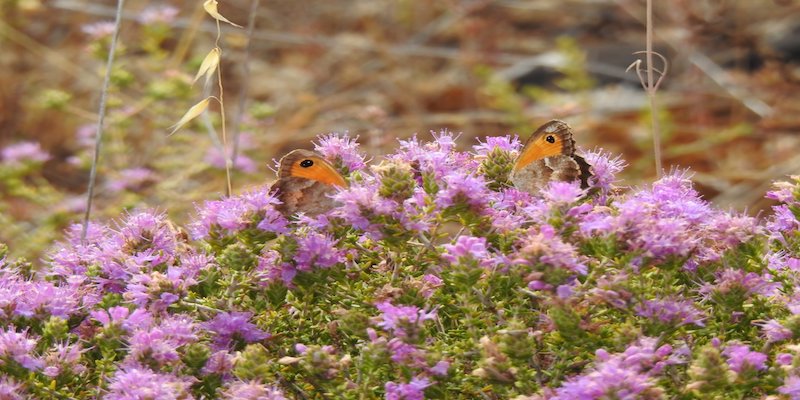
The Regional Natural Park of Coastal Dunes 'from Torre Canne to Torre S. Leonardo' in Puglia is rich in hidden biodiversity on which LASPEH project aims to raise awareness.
Particularly, "Sub-steppe paths of grasses and annual plants of Thero-Brachypodietea (* 6220)" is a priority habitat, based on Directive 92/43 / EEC Habitat, included into the Park of Coastal Dunes and subject to enhancement of the LASPEH project.
In the summer, along the pseudosteppa fossil dunes and the blades, it is possible to observe the flowering of the Headed Savory (Thymbra capitata L. Cav.), a plant belonging to the “Lamiaceae” family and to the “thymbra” genus.
The scientific name derives from the Greek "θυον" (thyon) which means "fragrant" - referring to its properties - while the term “capitate” comes from “cáput”, “cápitis testa”, of the head, indicating the flower head of the plant. It is a common species in the Mediterranean basin: a full-fledged shrub about 20-30 cm tall, intensely aromatic. It spreads in the driest areas, in the blades and garrigues of the Mediterranean area (especially in the east) and exposed to salt.
Appreciated in beekeeping for the production of the precious thyme honey, it is a melliferous plant with a strong attractive power on bees.
It is also an aromatic plant used in cosmetics, perfumery and phytotherapy, obtaining an essential oil from the plant which is used as an antiseptic and having diuretic properties.
The Romans were the first to introduce its use in the culinary field to perfume wines and cheeses, but also as a disinfectant.

